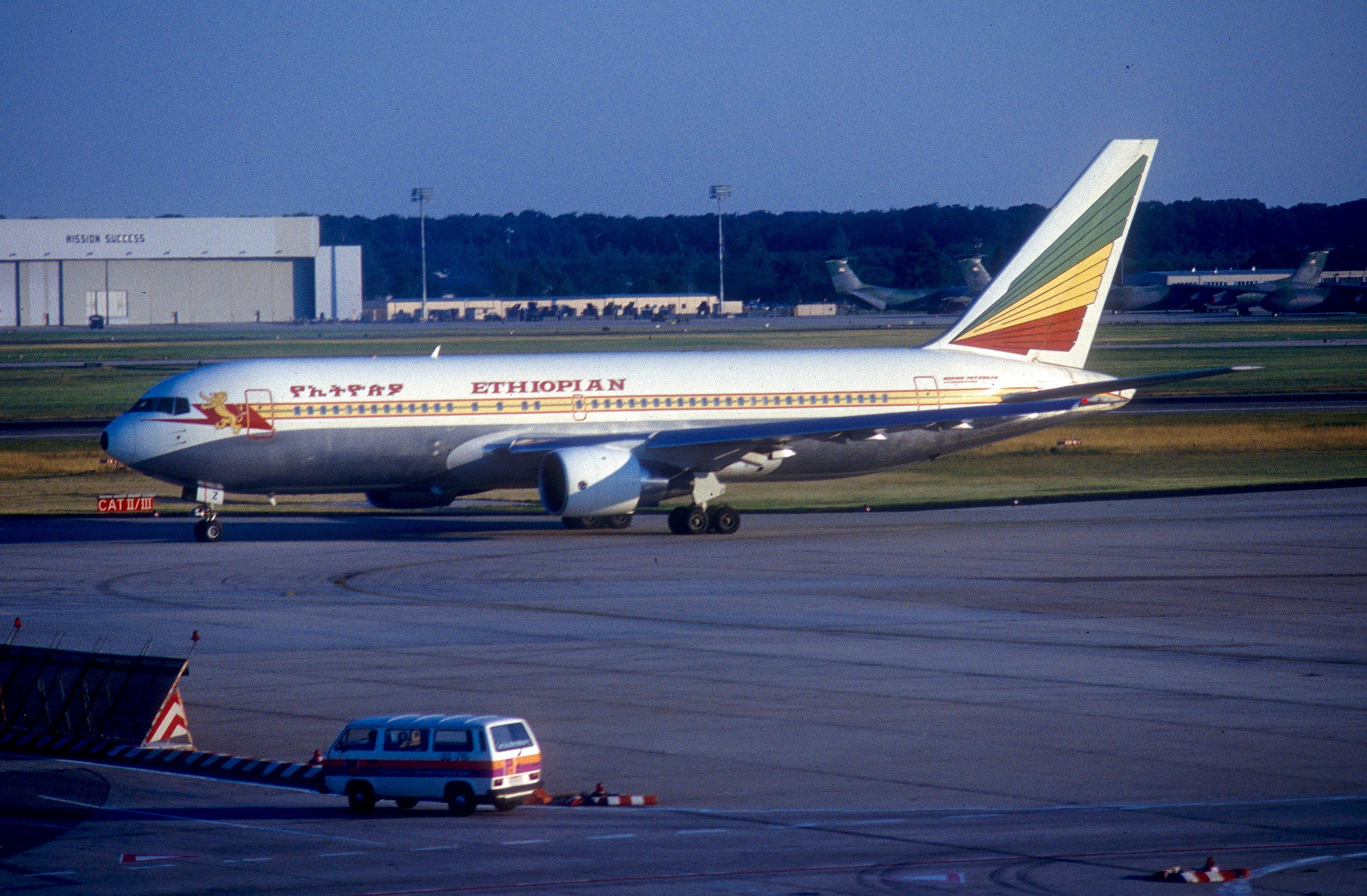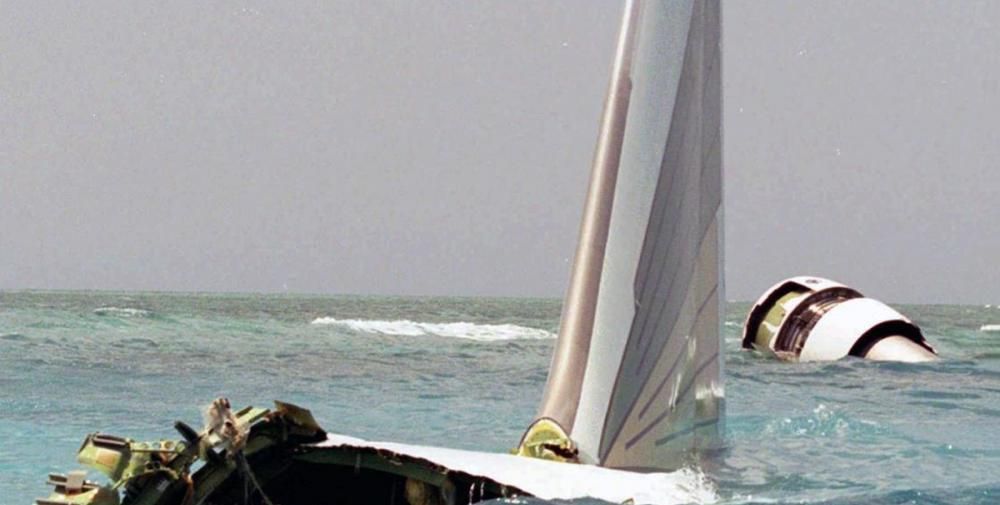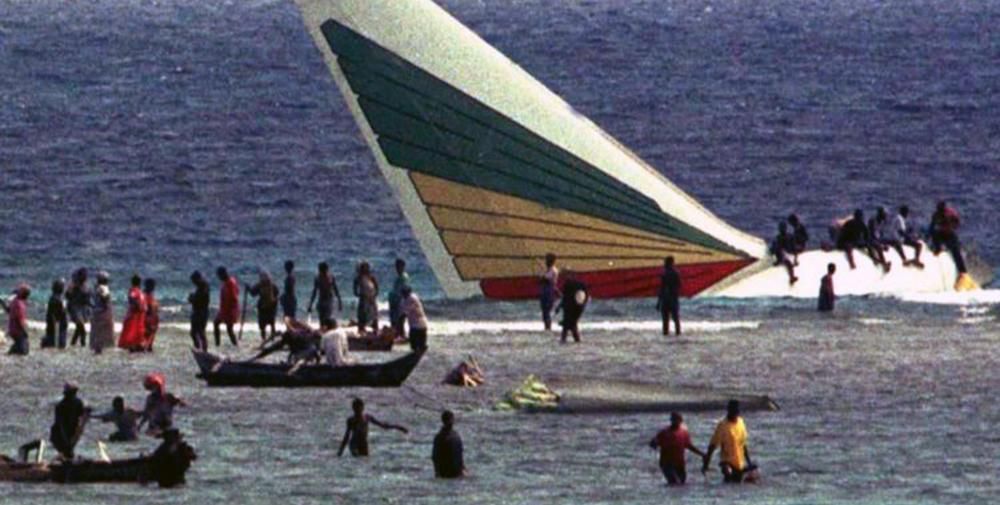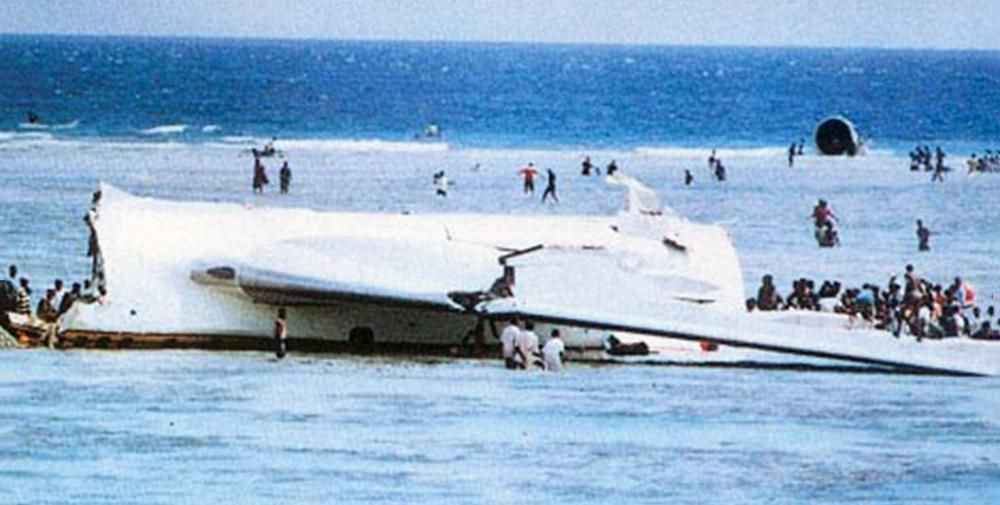Ethiopian Airlines flight 961 took place on November 23rd, 1996. The crew planned to fly from Addis Ababa to Nairobi, Brazzaville, Lagos, and Abidjan. The Boeing 767-200ER had 12 crew members and 163 passengers onboard. The flight took off slightly delayed from Bole International Airport, Addis Ababa, at 08:09.
The crew
Captain Leul Abate was the pilot in command. The first officer was Yonas Mekuria, and the flight engineer Shibeshi Melka. There were nine cabin crew: Girmay Lemlem, Hiwot Tadesse, Yeshimebet Gebremeskel, Tsegereda Estifanos, Yodit Sebsibe, Tehut Zemedagegnehu, Sime Gulima, Tsehay Zewde, and Nazerawit Amanuel.
The flight
Just 20 minutes into the flight at 08:29, two men jumped out of their seats into the aisle and headed towards the cockpit, pushing the cabin crew aside. Hiwot saw them and thought they were fighting in the cabin when a third man followed; she knew it was a hijack. The hijackers smashed open the door and grabbed a crash axe and fire extinguisher from the cockpit. The third man was wearing a glove and had a 'bomb' in his hand and a bottle of whiskey taken from the bar cart. The lead hijacker told the flight crew that there were 11 hijackers in total. He held the crash axe and a bottle of whiskey. The hijackers assaulted the first officer and forced him out of his seat into the cabin.
In the cabin
Two cabin crew, Tehut, and Tsegereda, were seated in row 2. Tsegereda was asked to set up the flight attendant panel for an announcement. One hijacker told the passengers that if anyone tried to interfere, they would blow up the plane. One cabin crew attended to the injured first officer.
"I pushed back my trolley and told the other girl to stop serving drinks. The terrorists said for everyone to be seated. They said they had explosives and they were going to blow up the airplane."
Hiwot - cabin crew flight 961
In the cockpit
The hijackers demanded that the aircraft be flown to Australia, where they wished to seek asylum. The captain had two prior hijacking experiences, so this was not new to him. He explained that the aircraft did not have enough fuel, but they did not believe him. They pointed to the inflight magazine, saying that the 767 had capacity for 11 hours. The captain explained they only had three and a half hours of fuel and suggested they land in Mombasa and get enough fuel to go to Australia. They refused and told him to continue to Australia.
Low on fuel
Two of the hijackers patrolled the cabin. The cabin was quiet, with only a few hushed whispers. For the passengers, the flight seemed never-ending. The lead hijacker stayed inside the cockpit, insisting that there was enough fuel. The captain flew the aircraft in a southerly direction along the African coastline. He knew there wasn't enough fuel, so he planned to stay close to the coast, as there were more airports along the coast where he could land. He hoped to land at one of the airports in the Comoros Islands.
"He let us feed the children. When he would look down one aisle, I let the passengers down the other aisle to go to the bathroom or get a sandwich."
Hiwot - cabin crew flight 961
The right engine flamed out at 11:41. The lead hijacker went into the cabin to talk to the other hijackers. The captain used the opportunity to make an announcement to the passengers to prepare for a crash landing and 'react' to the hijackers. The lead hijacker returned to the cockpit and knocked the microphone out of his hand. The left engine then flamed out. The hijacker told the captain to descend and increase the speed. Neither the cabin crew nor the passengers understood the instruction to 'react.' The passengers were praying or crying.
The 767 was now gliding with just the standby instruments and ram air turbine. The first officer went to the rear of the cabin to find passengers wearing their life jackets and inflating them. He and the cabin crew then helped the passengers deflate the life jackets, showed them how to reinflate them, and how to assume the brace position. The cabin crew kept repeating the instructions. They stored any loose items in the cabin and checked that all passengers wore life jackets.
A fight for control
Hiwot and Yeshimebete saw one of the hijackers sitting in the first officer's seat, playing like a child with the control stick. The aircraft dipped dangerously a few times. The captain wanted to make an emergency landing at the airport at Grande Comores. However, the hijackers were interfering with the flight controls, and during a fight to regain control, he lost his visual point of reference. One of the passengers, a wartime photojournalist, went to the cockpit door to negotiate with the hijackers. The only other option now was to land on water.
Ditching
In the last few moments before the ditching, the first officer forced his way back into the cockpit and took his seat. The captain made an announcement telling the passengers to stay calm and not to inflate life jackets inside the aircraft. The journalist still tried to negotiate with the hijackers. It was now 12:20. The flight crew attempted to land parallel to the water, but the left wing tip and engine struck the water first. The passengers screamed as it hit the water. There was a deafening noise. The 767 bounced four times before hitting a coral reef and disintegrating into four pieces. Then there was silence. The aircraft was filling with water and started to sink. They were 500 yards from shore. The final approach and ditching was filmed by tourists on the beach, thinking it was part of an airshow.
Fatal mistake
Some passengers died because they inflated their life jackets inside the cabin. They had got caught in the water and pushed upwards to the ceiling with the rising water. They were trapped and drowned in the fuselage. Many survived the initial impact but, maybe in a sense of panic, did not hear the captain's instructions not to inflate life jackets. Those in the center of the cabin were hanging upside down in the cabin. Some struggled with opening the seatbelt underwater. Those who could escape looked for sunlight and swam out of the aircraft.
Aftermath
Those who survived the accident had cuts to their hands and legs due to climbing out of the jagged fuselage. They clung to pieces of the broken aircraft and shouted for help. They were surrounded by a sea of debris, dismembered bodies, luggage, and clothing. Villagers, tourists, and staff from a local hotel started the rescue effort. Rescue teams, firefighters, police, and the army were all informed, but there was a delayed response due to the fact that there may have been a bomb onboard the aircraft. Later, 50 people were found to have been trapped and drowned in the center cabin.
The flight crew and flight engineer survived. Of the nine cabin crew, six lives were lost. Hiwot, Girmay, and Yeshimebete survived. Forty-four passengers survived, mostly with serious injuries. The hijackers died, as did the negotiating journalist.
Amazingly, the captain and first officer continued to fly with Ethiopian Airlines, and they both received aviation awards for their actions that day.




